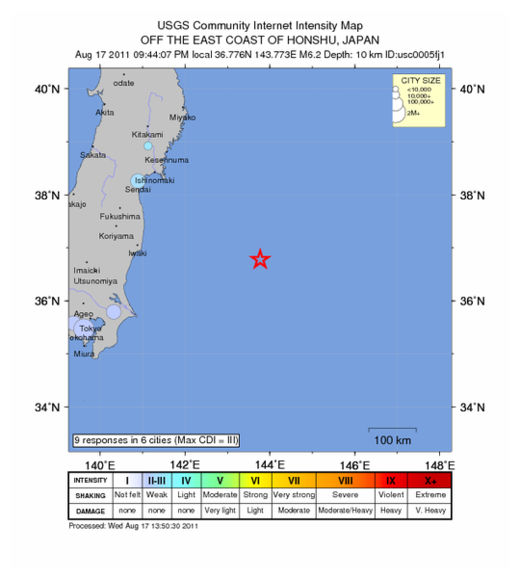
© USGSEarthquake Location
Wednesday, August 17, 2011 at 11:44:07 UTC
Wednesday, August 17, 2011 at 09:44:07 PM at epicenter
Time of Earthquake in other Time ZonesLocation
36.776°N, 143.773°E
Depth
10 km (6.2 miles) (poorly constrained)
Region
OFF THE EAST COAST OF HONSHU, JAPAN
Distances
304 km (188 miles) E of Iwaki, Honshu, Japan
339 km (210 miles) E of Mito, Honshu, Japan
349 km (216 miles) ESE of Sendai, Honshu, Japan
418 km (259 miles) ENE of TOKYO, Japan
